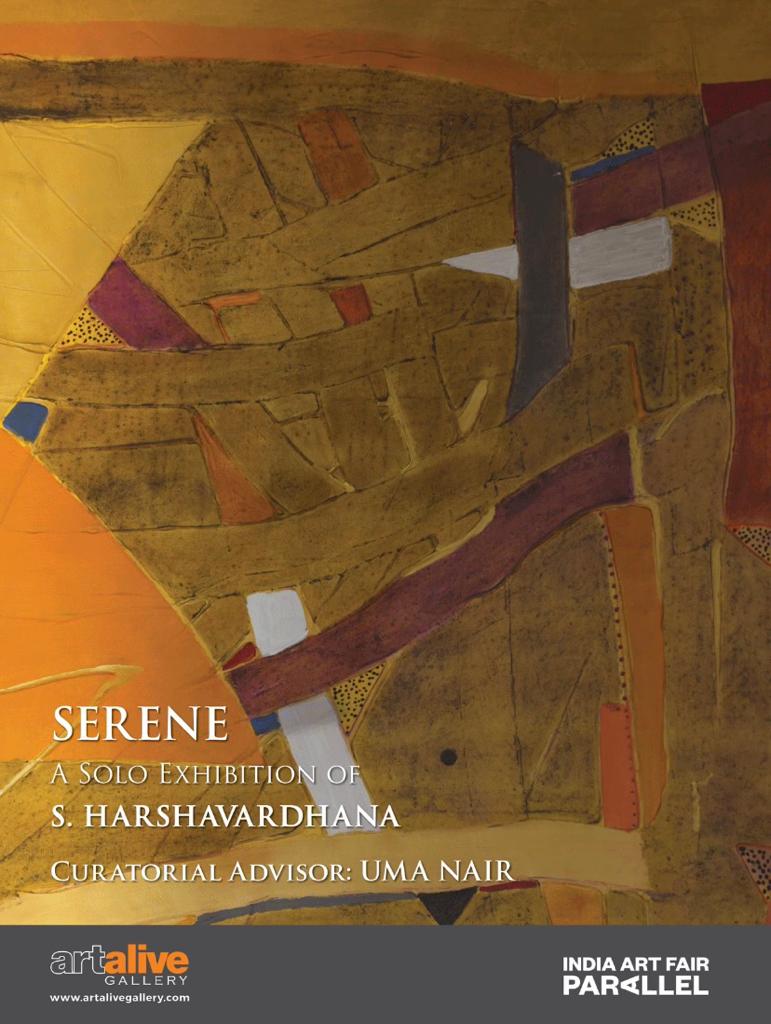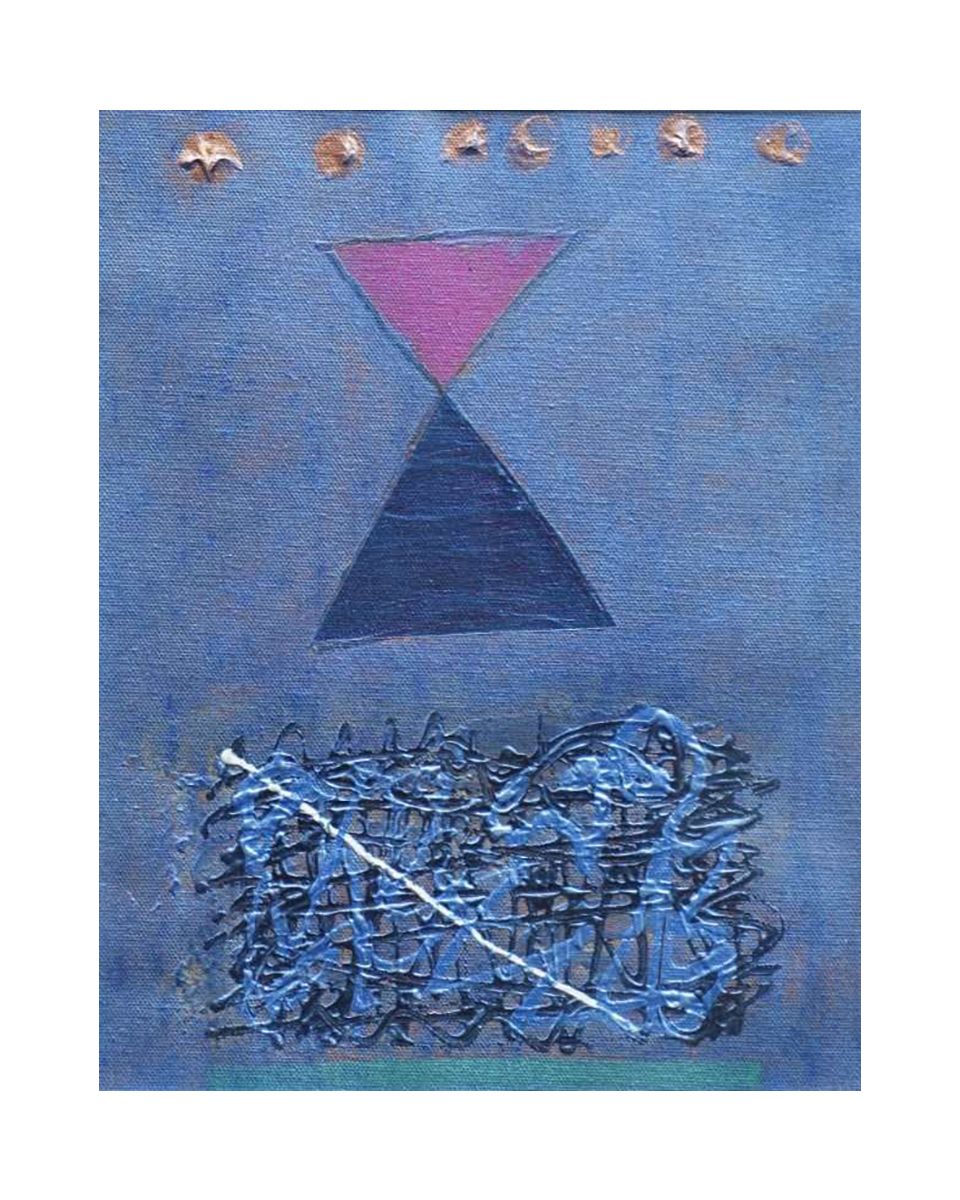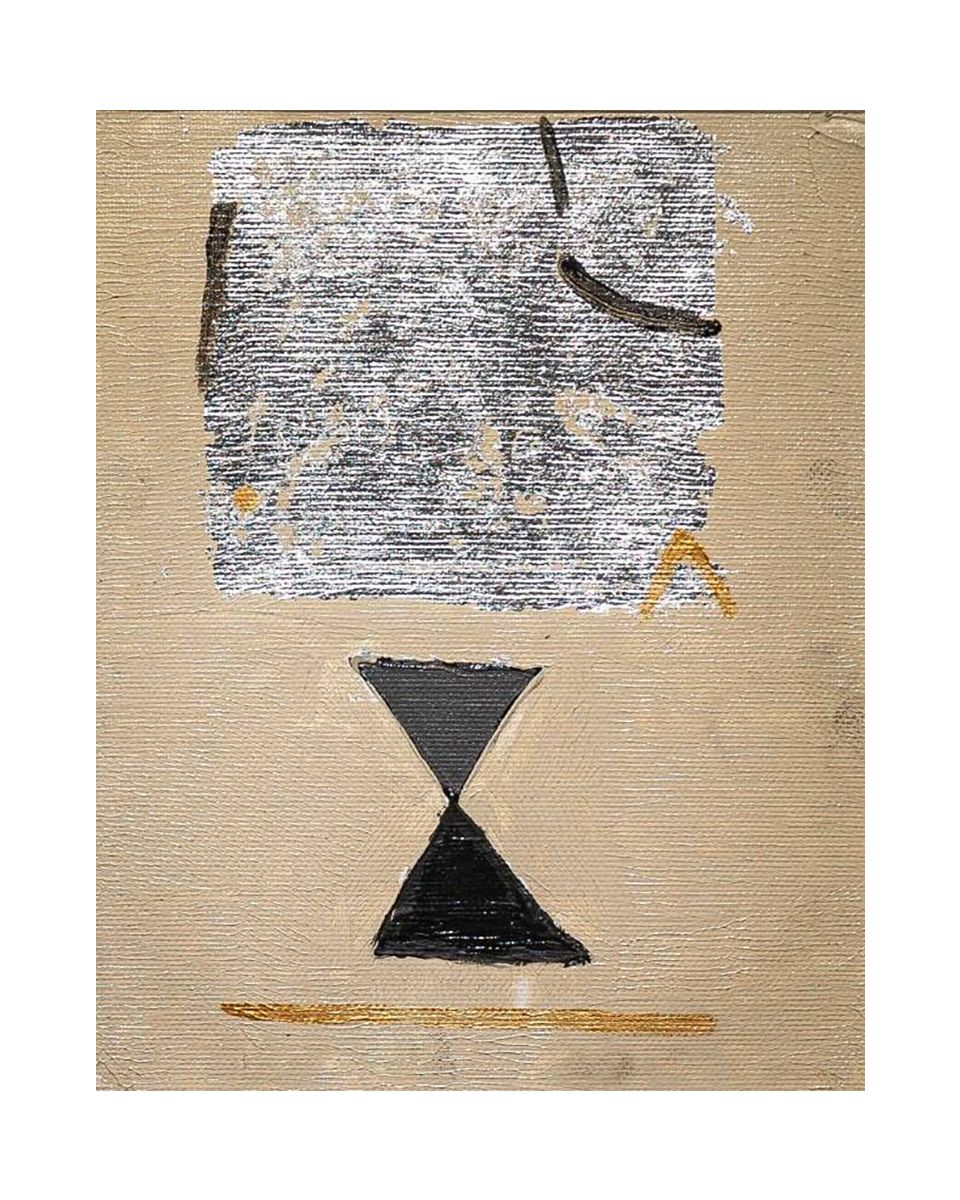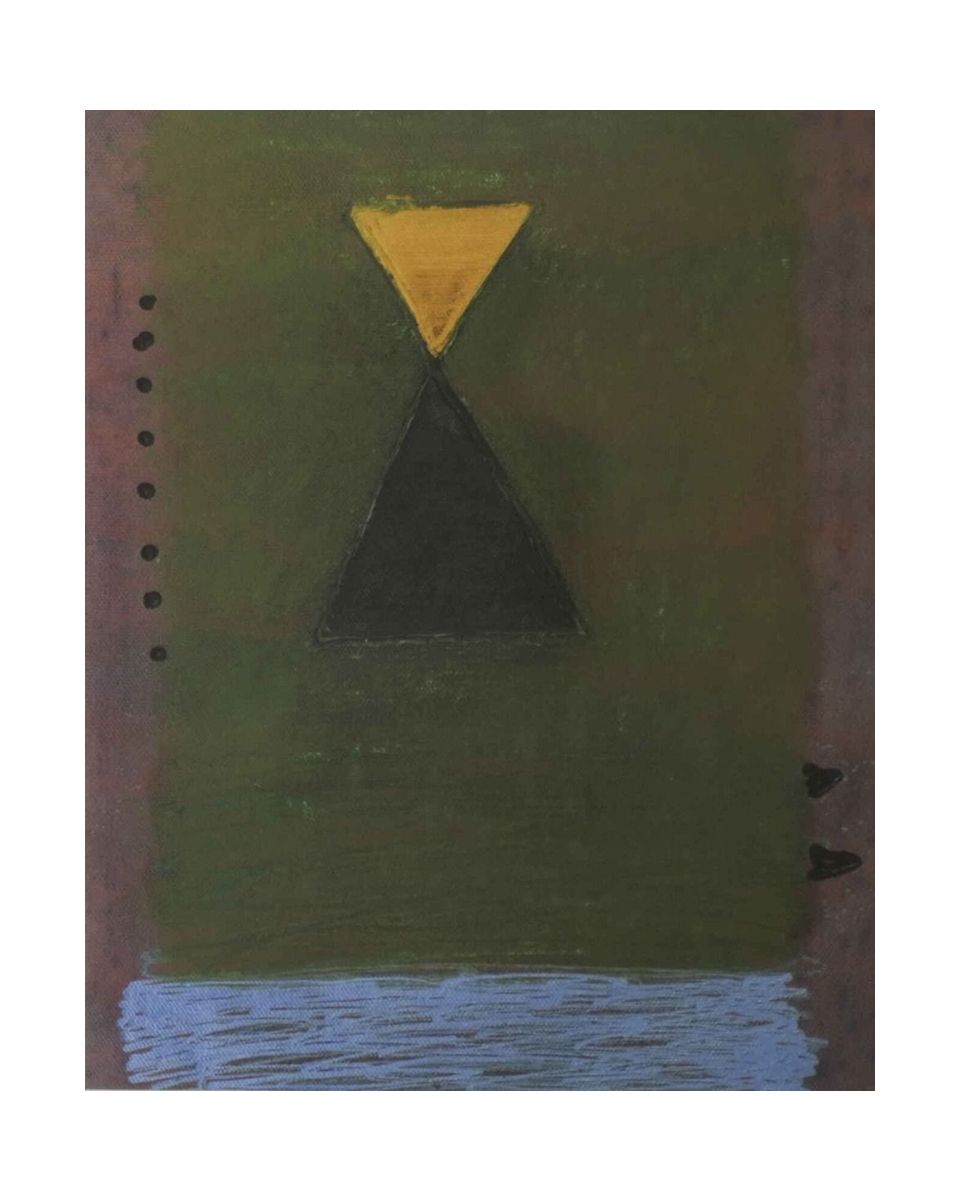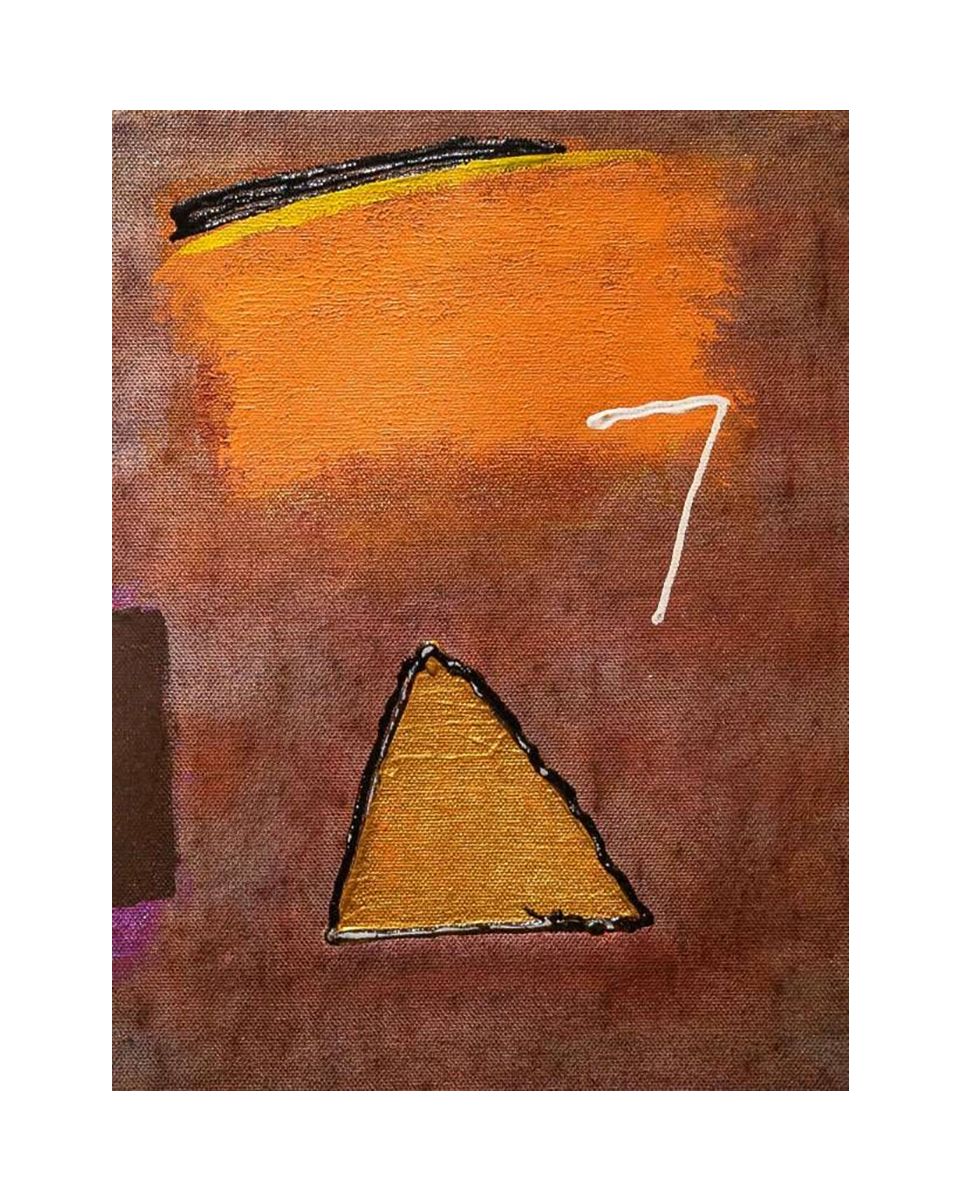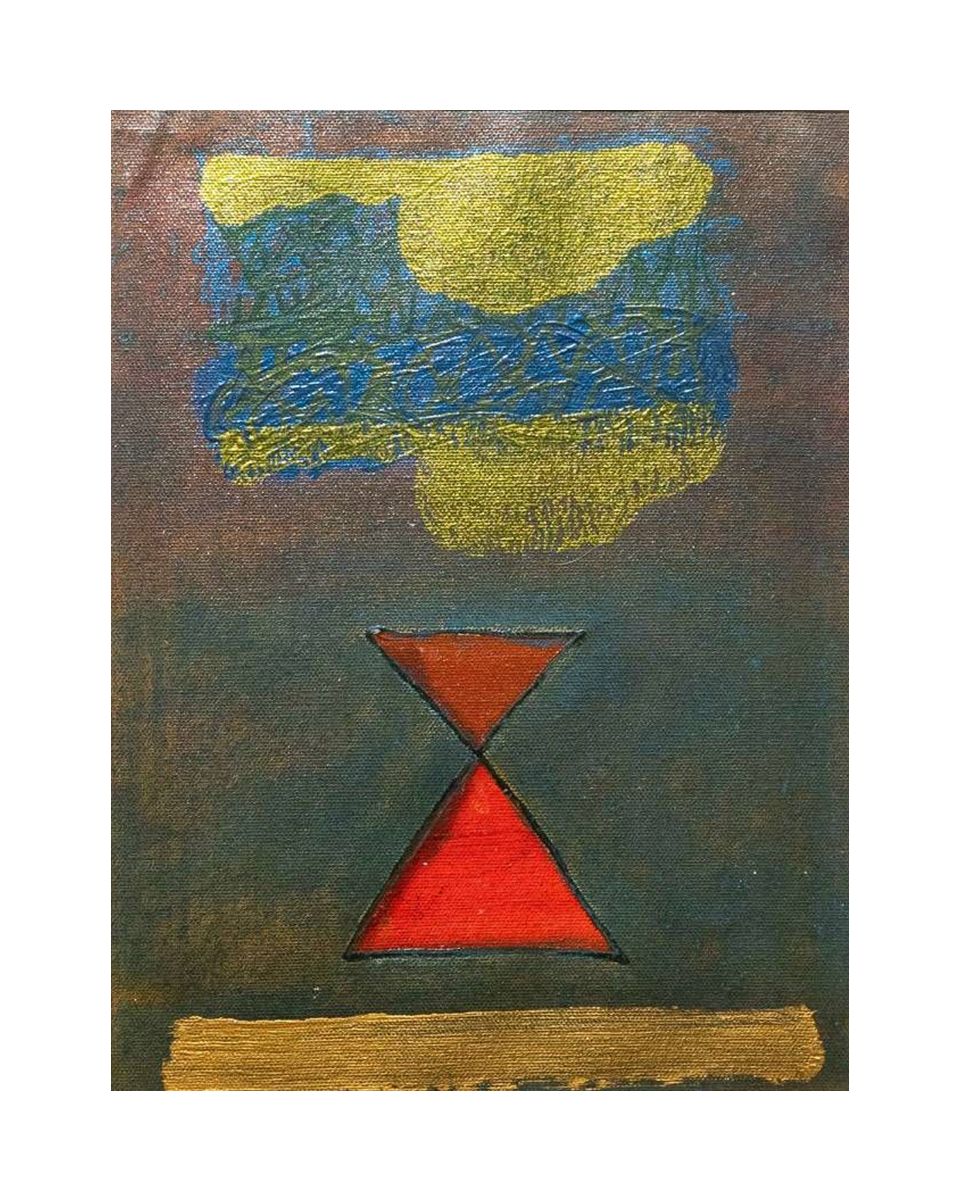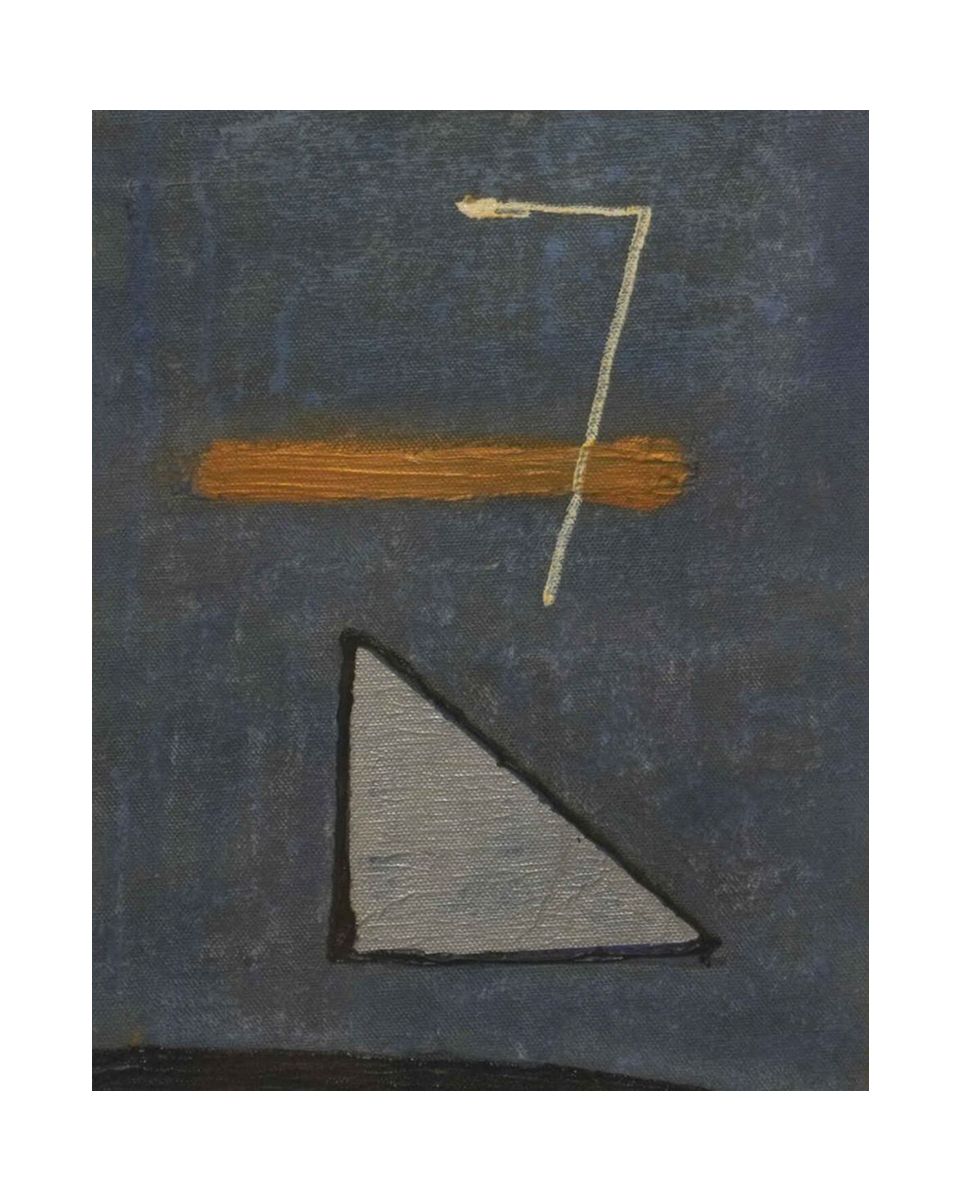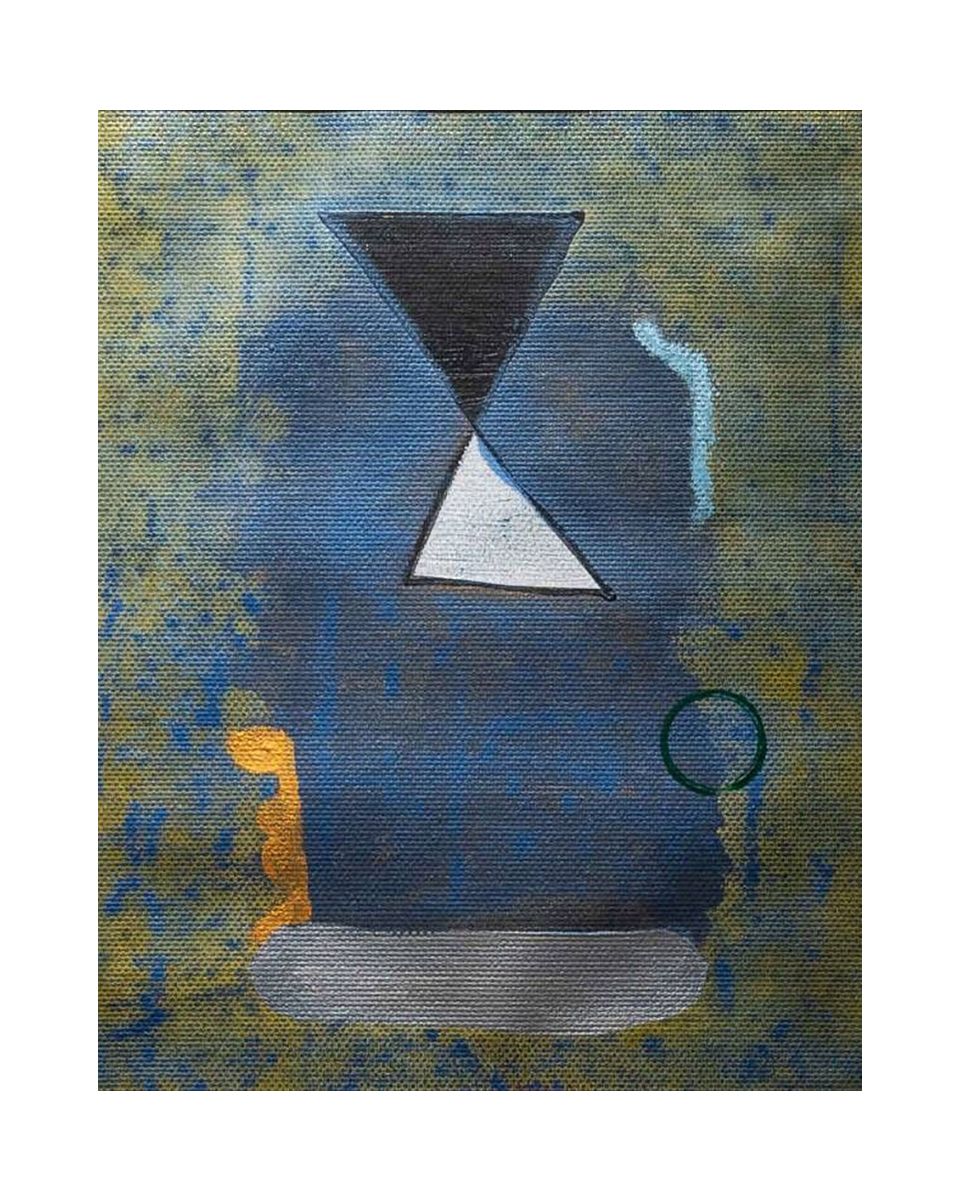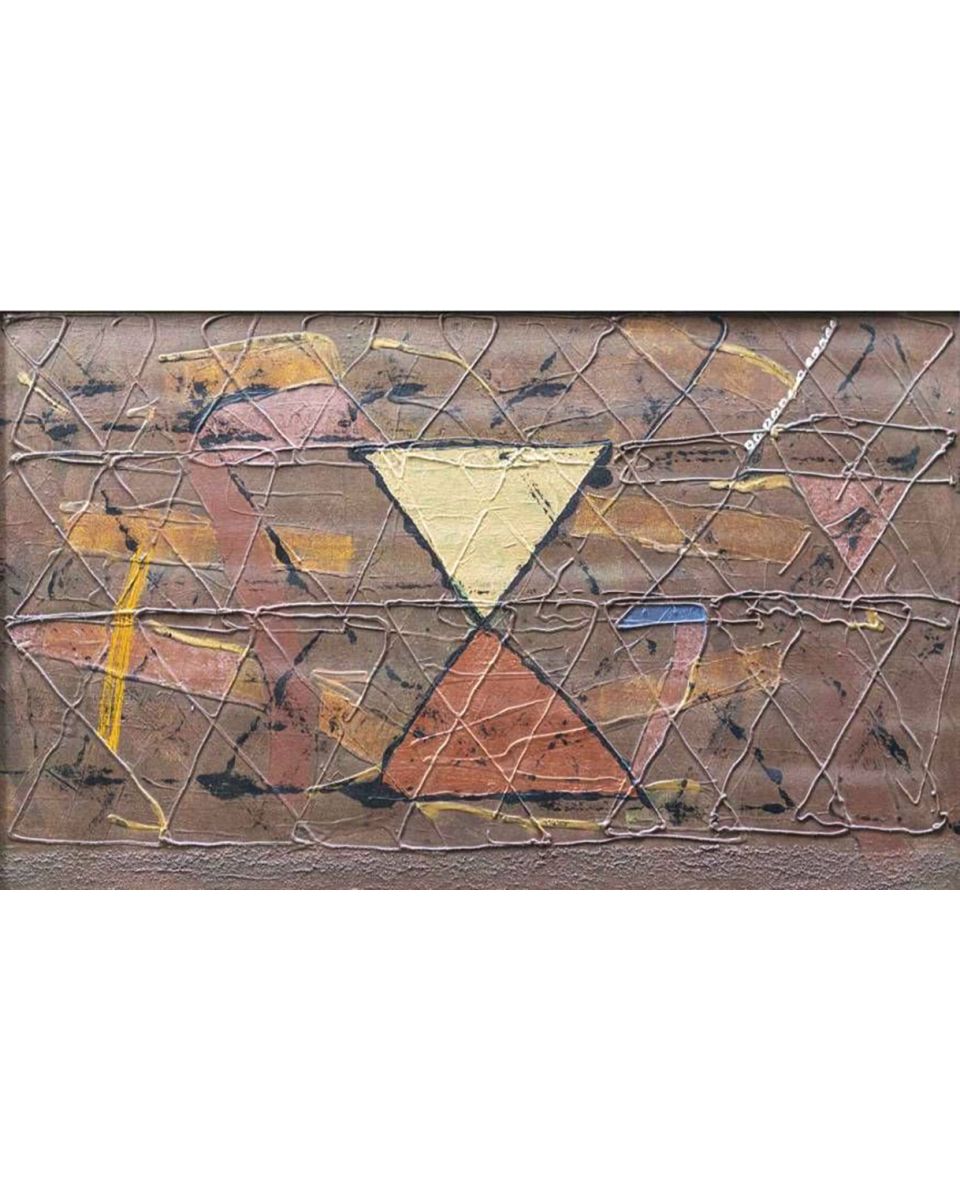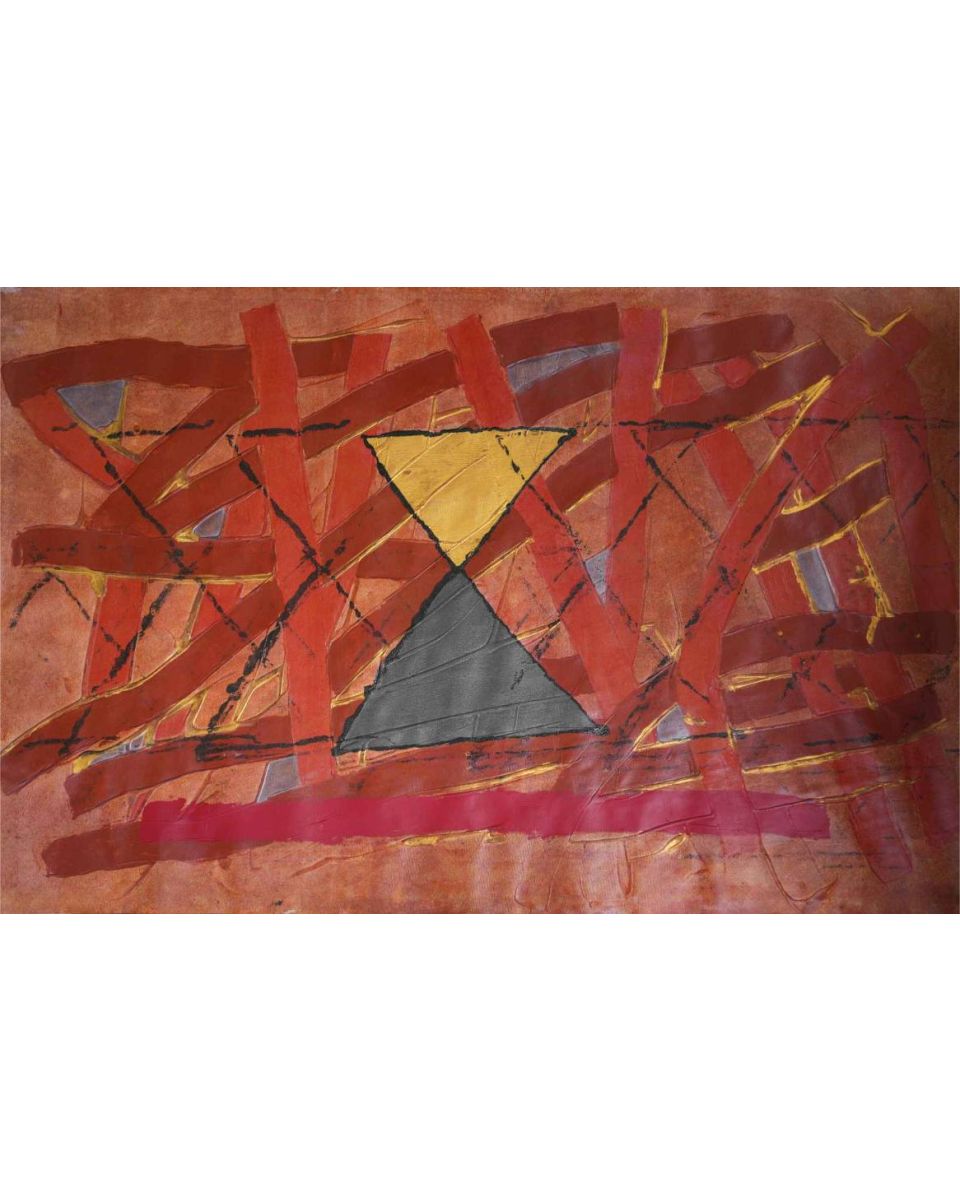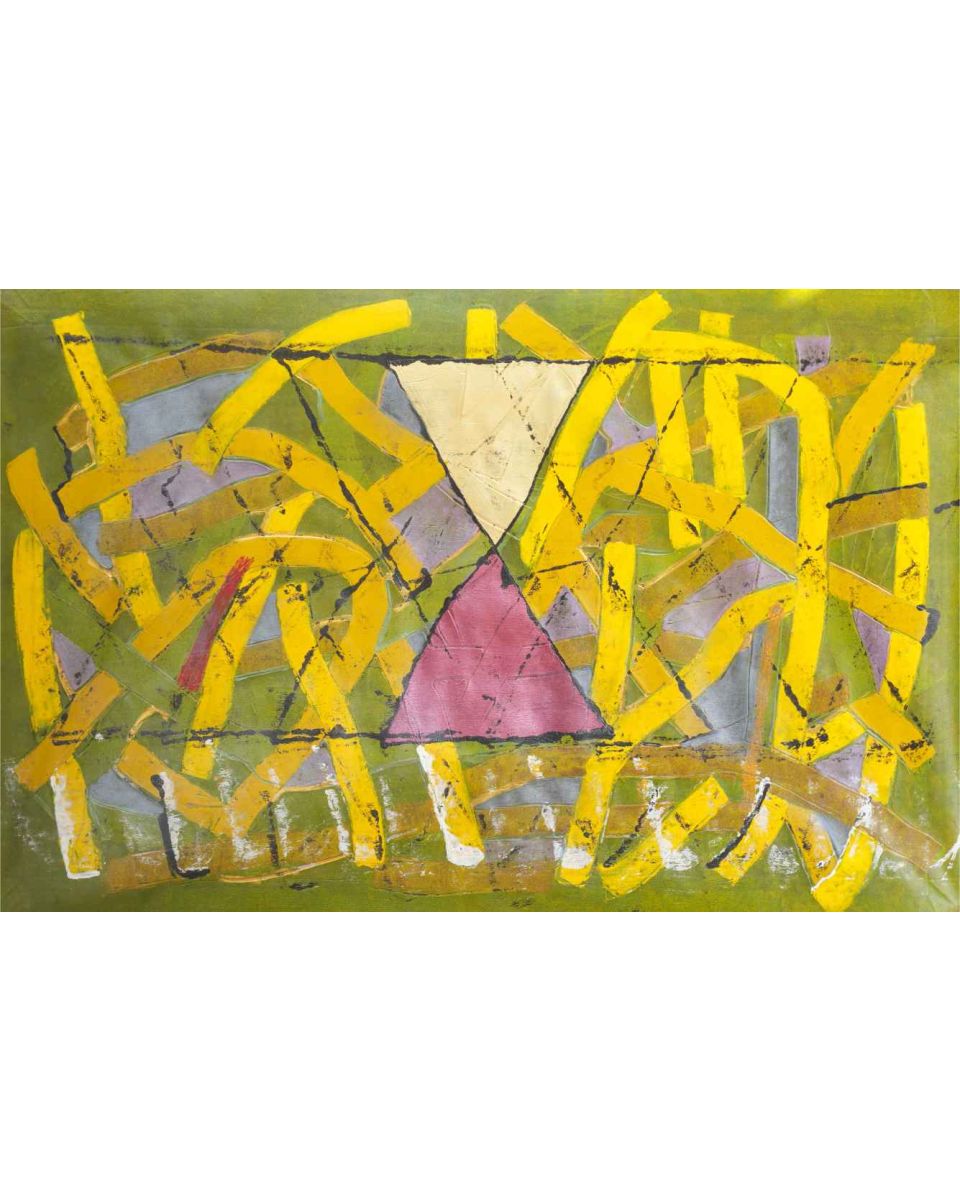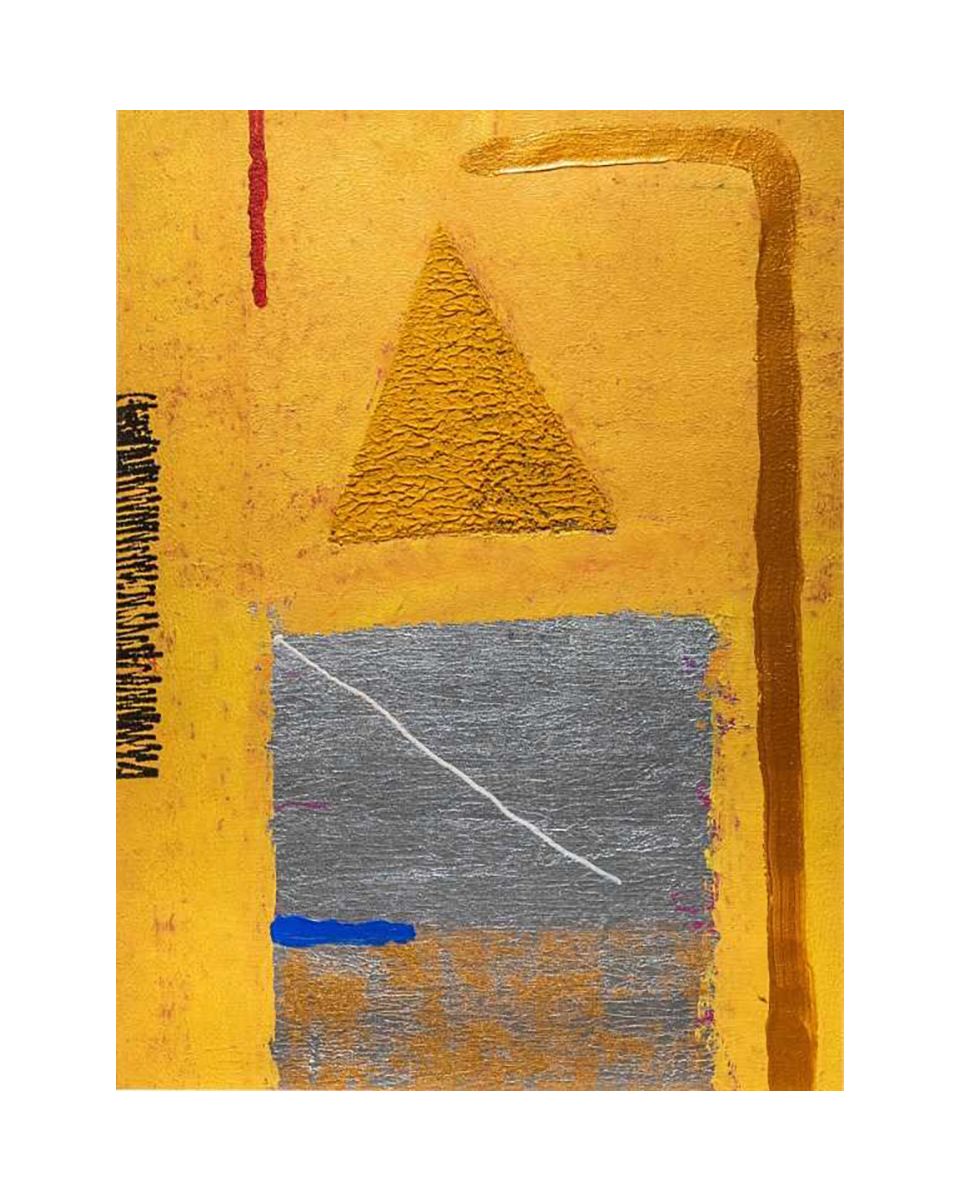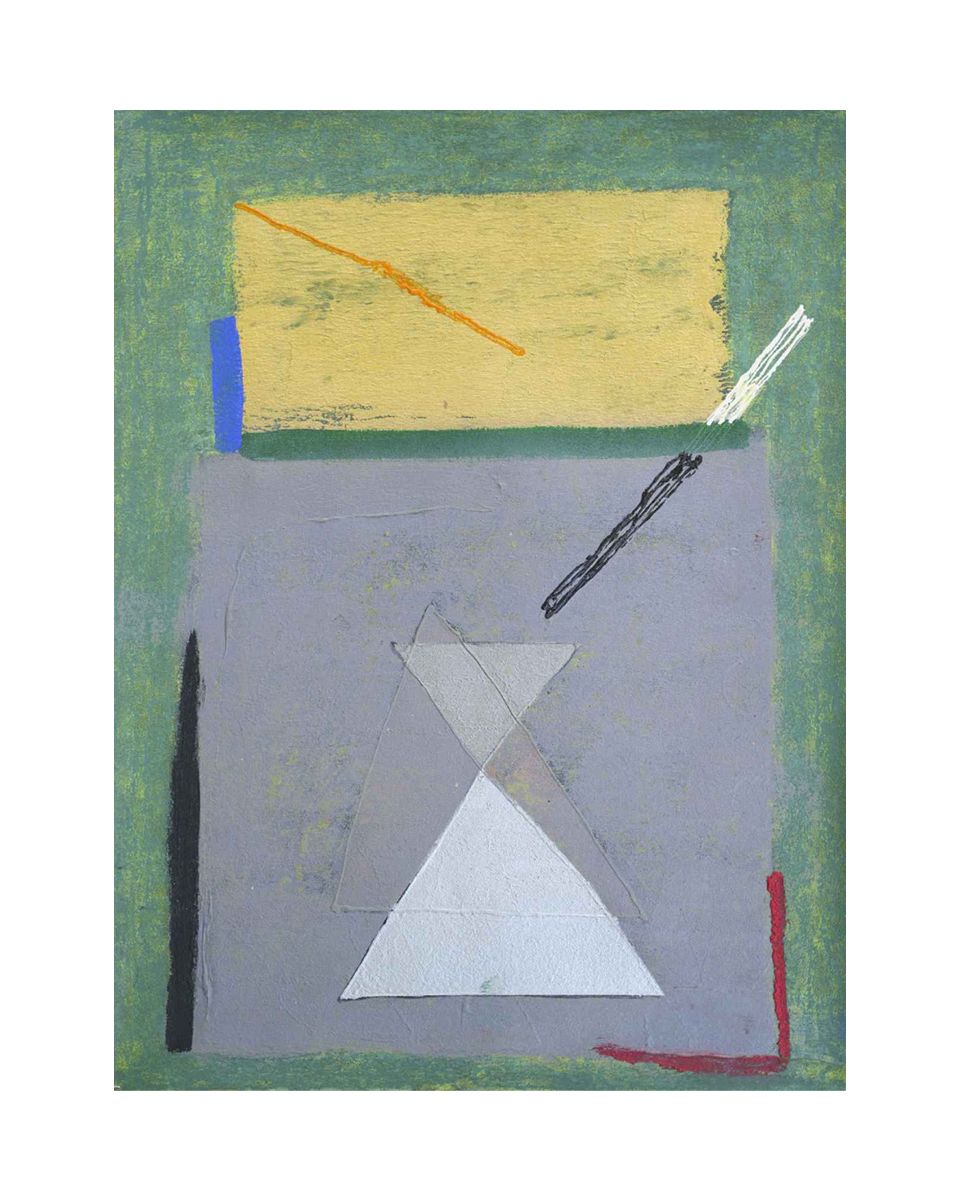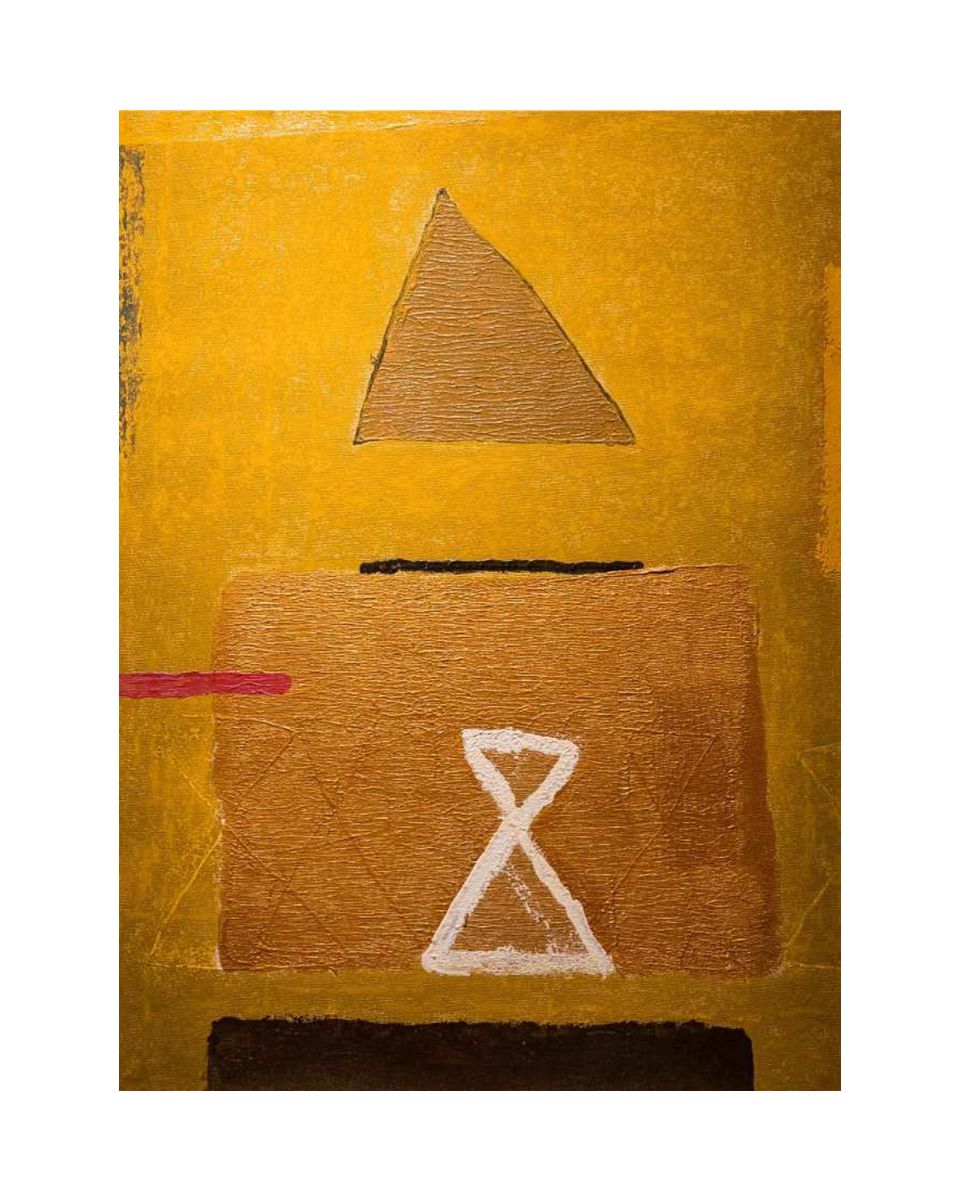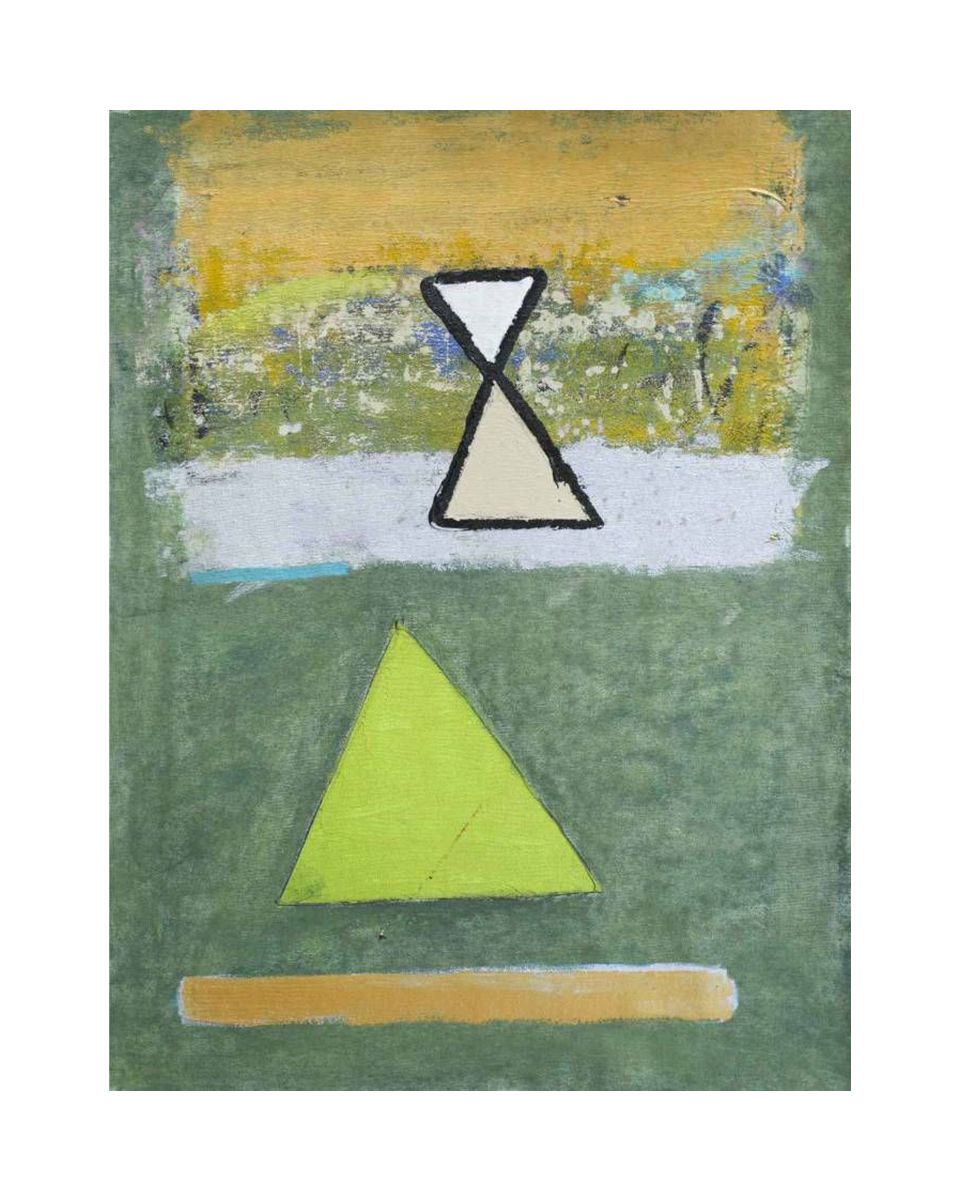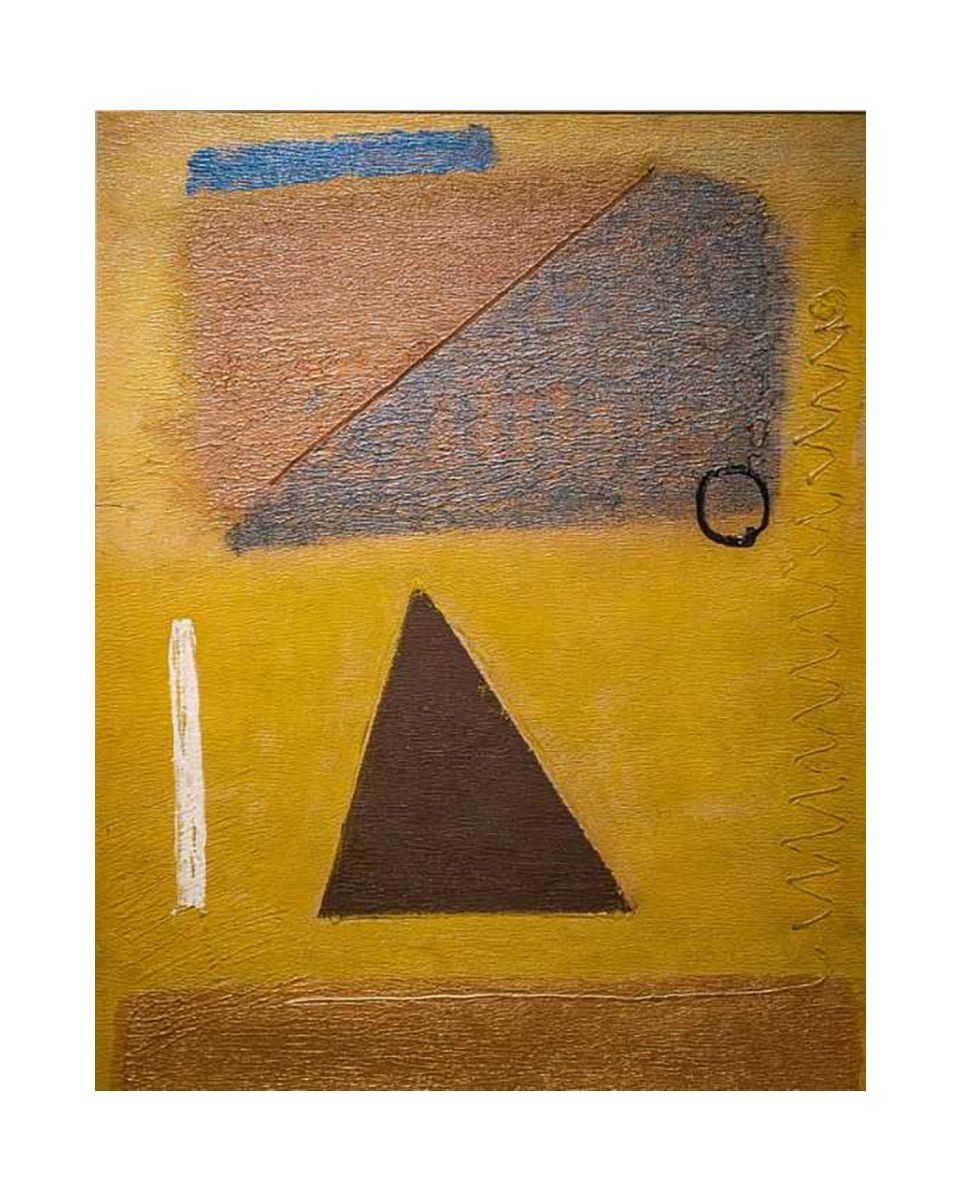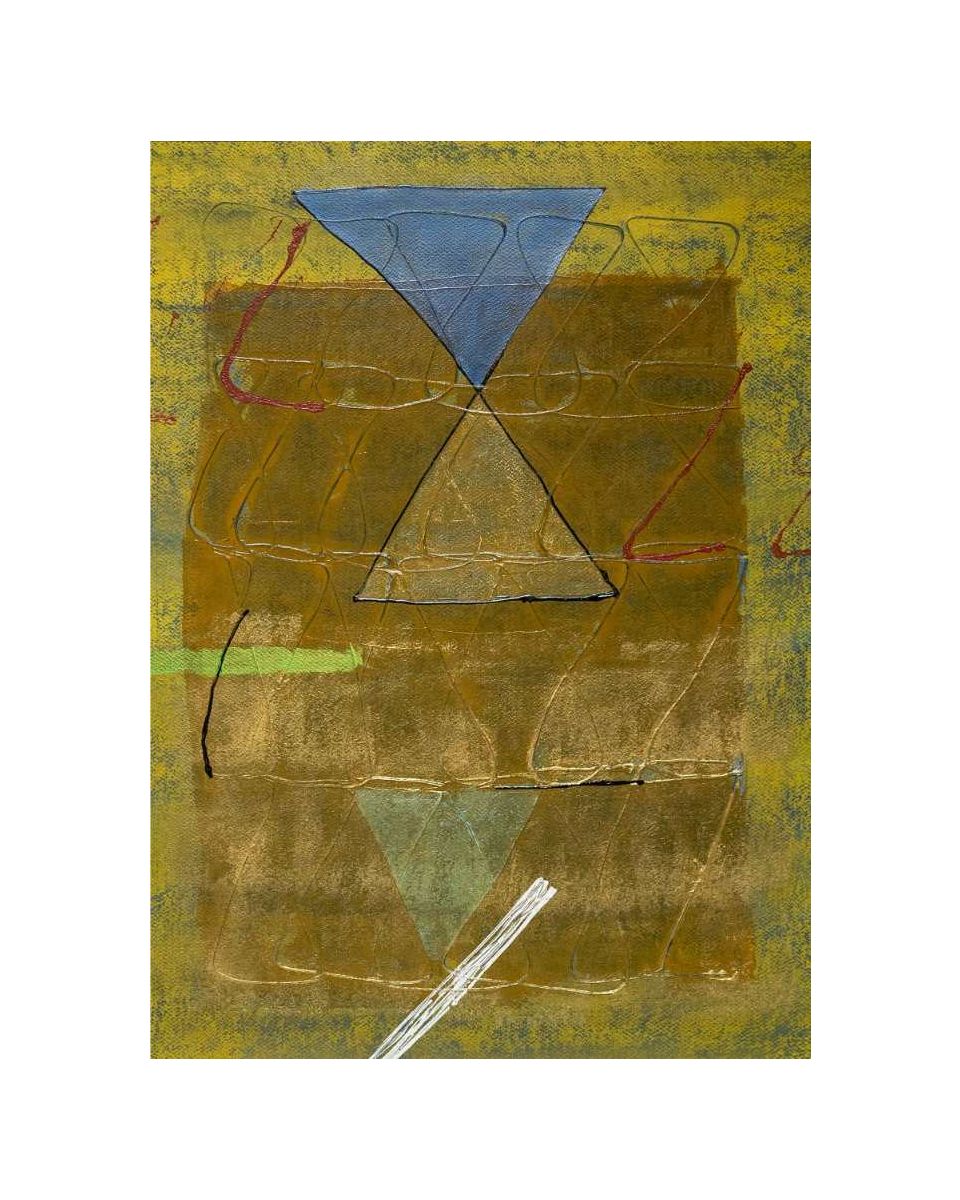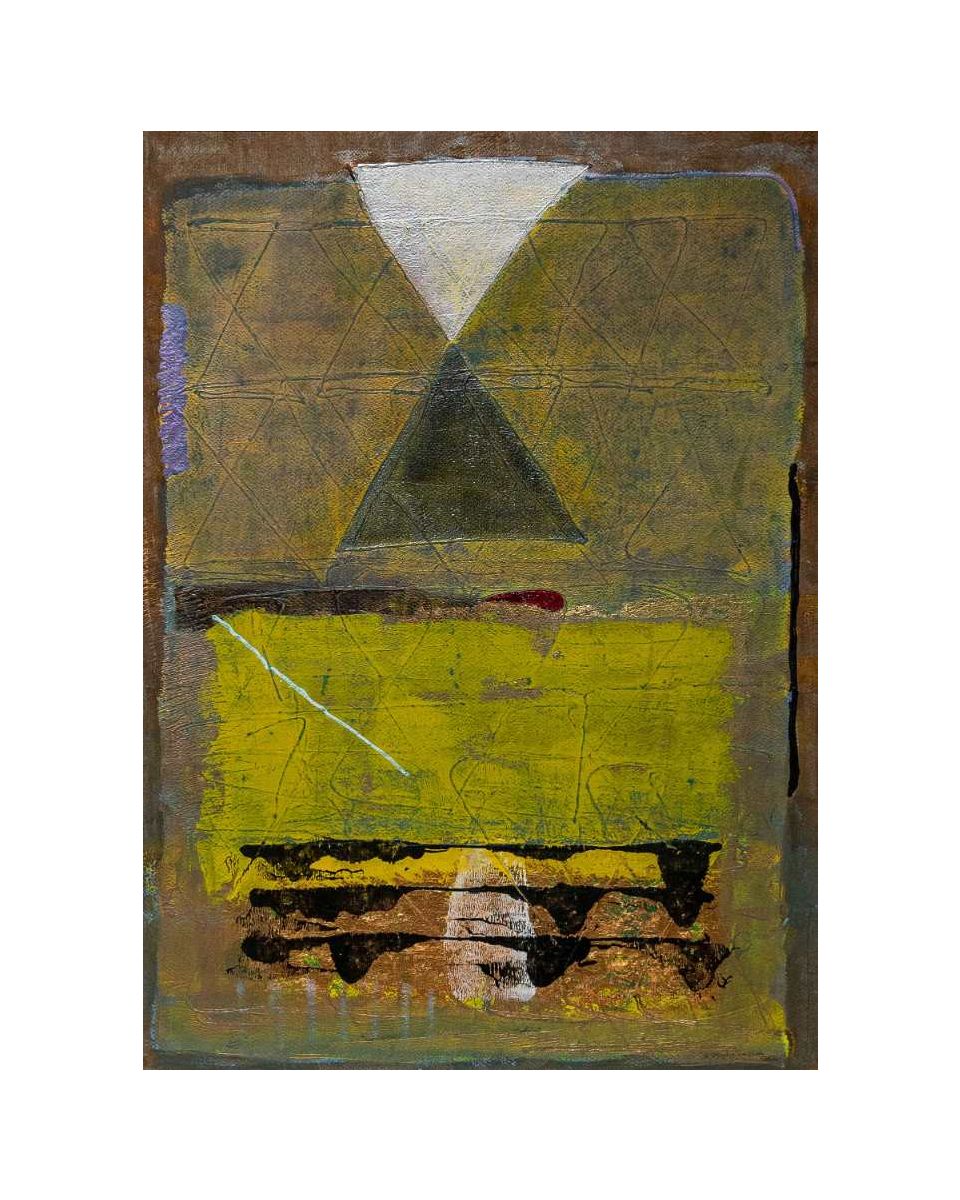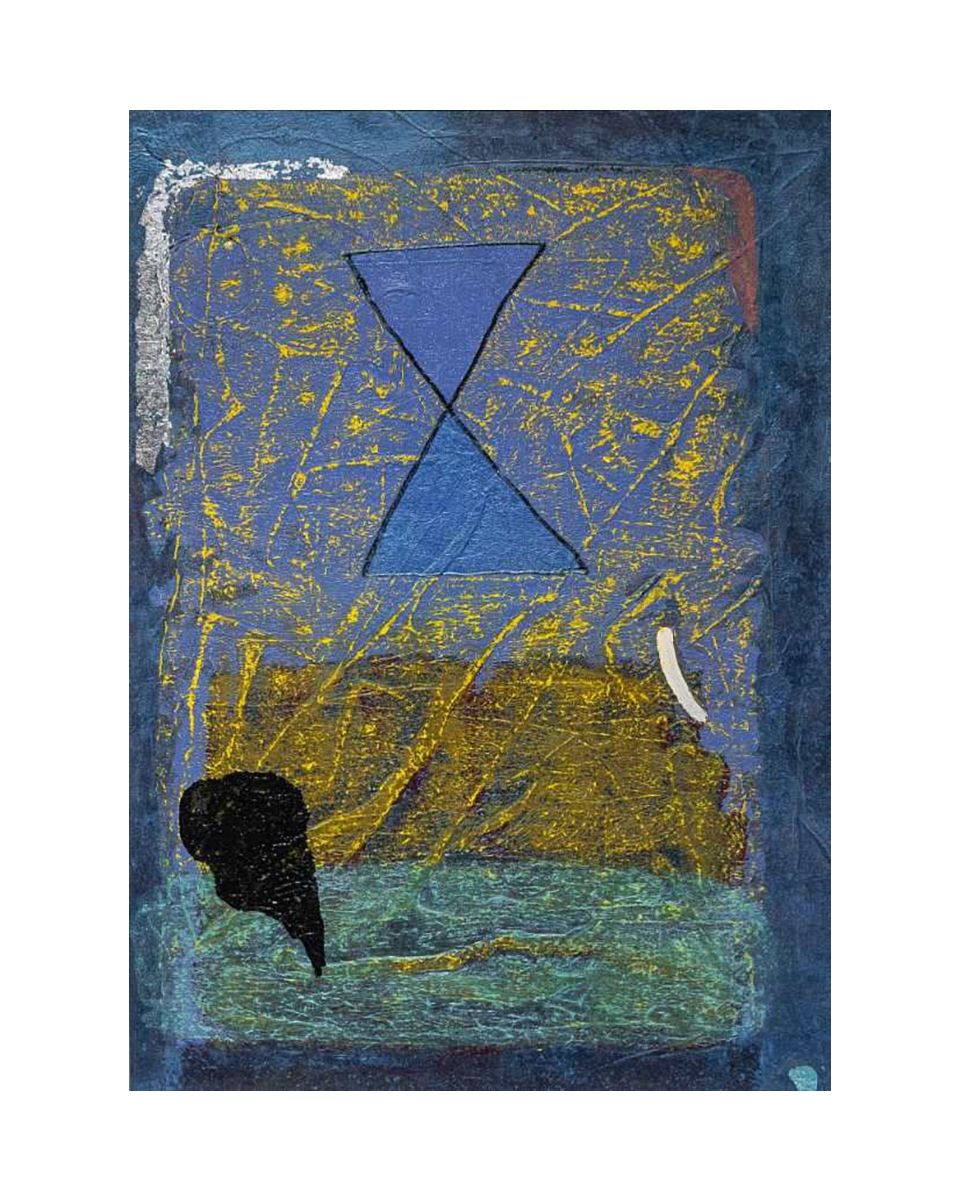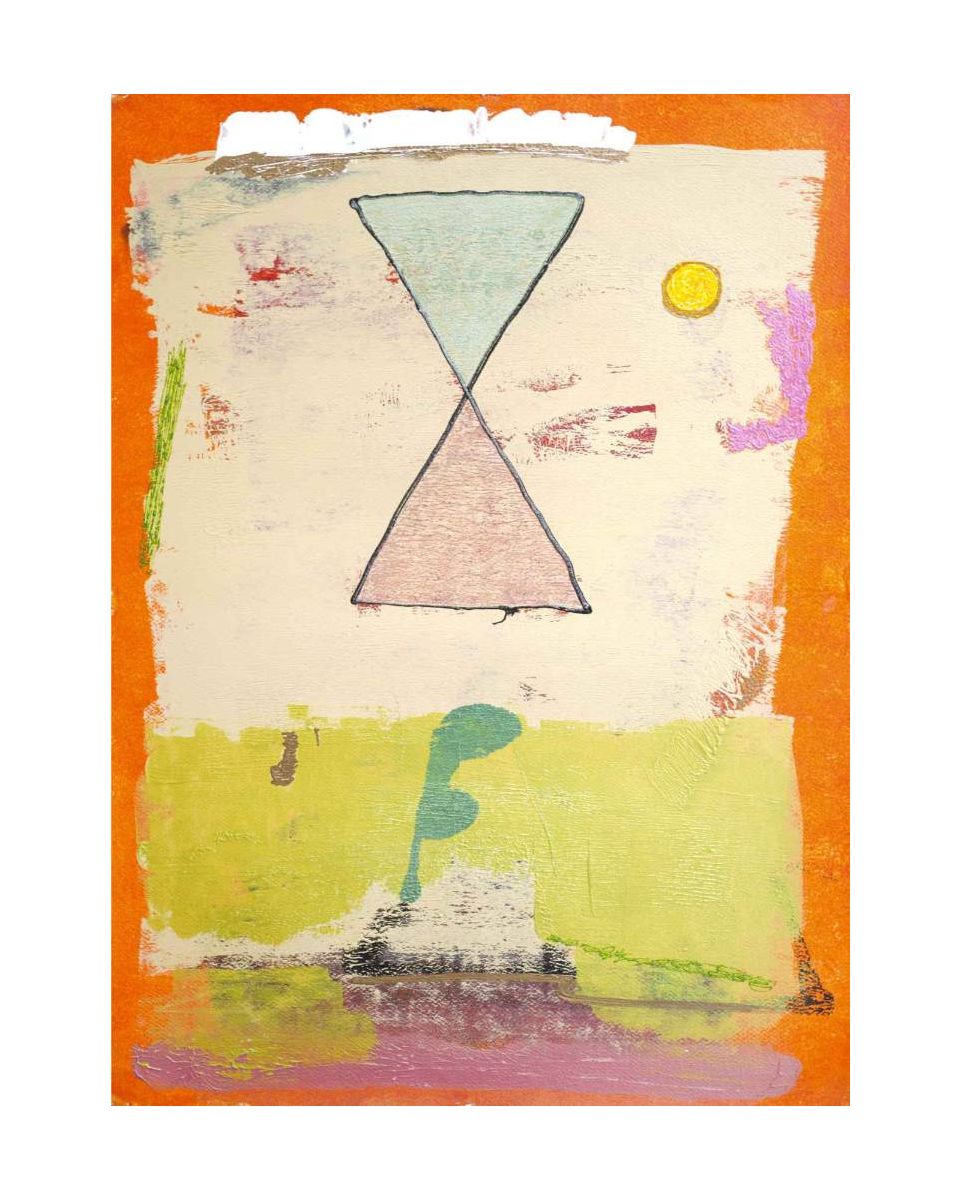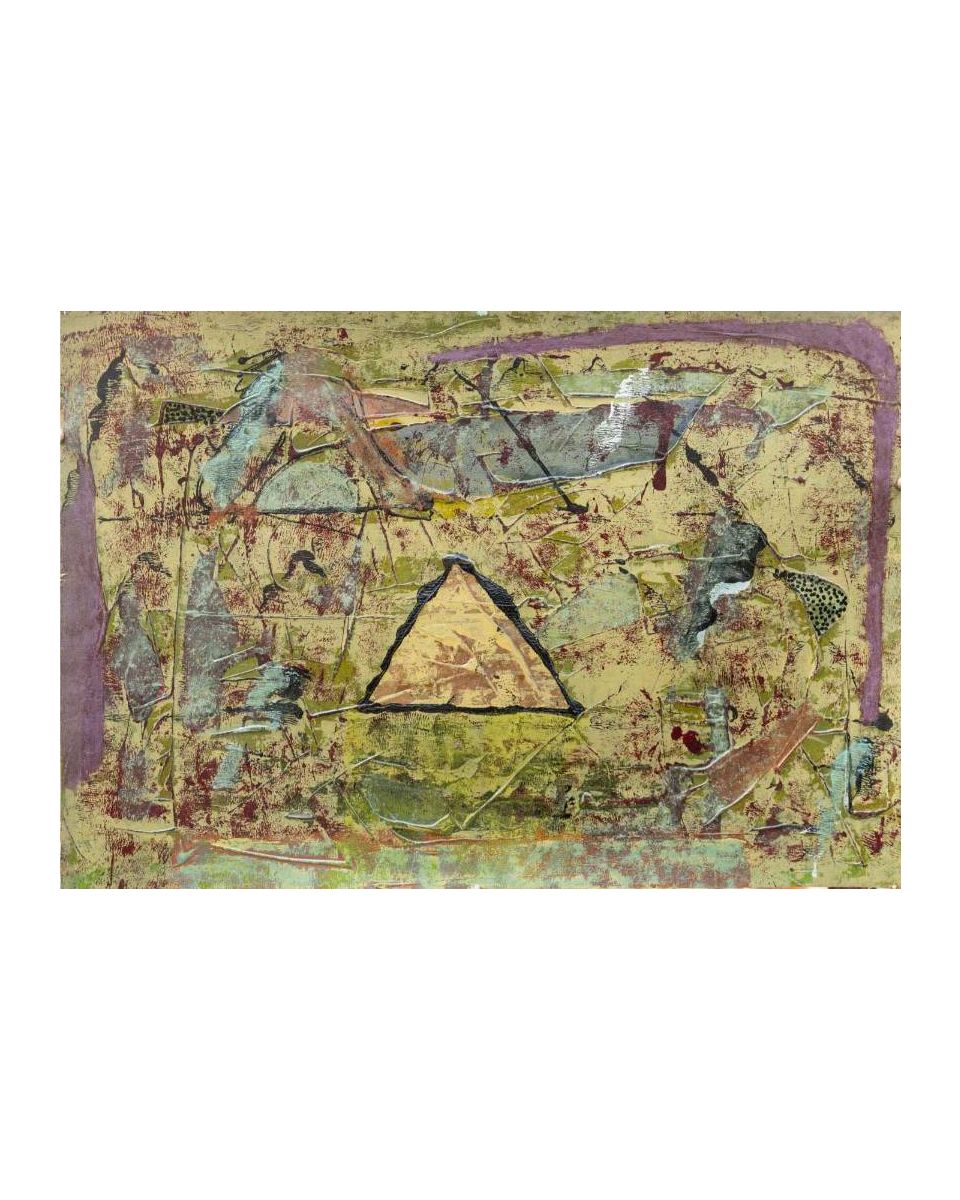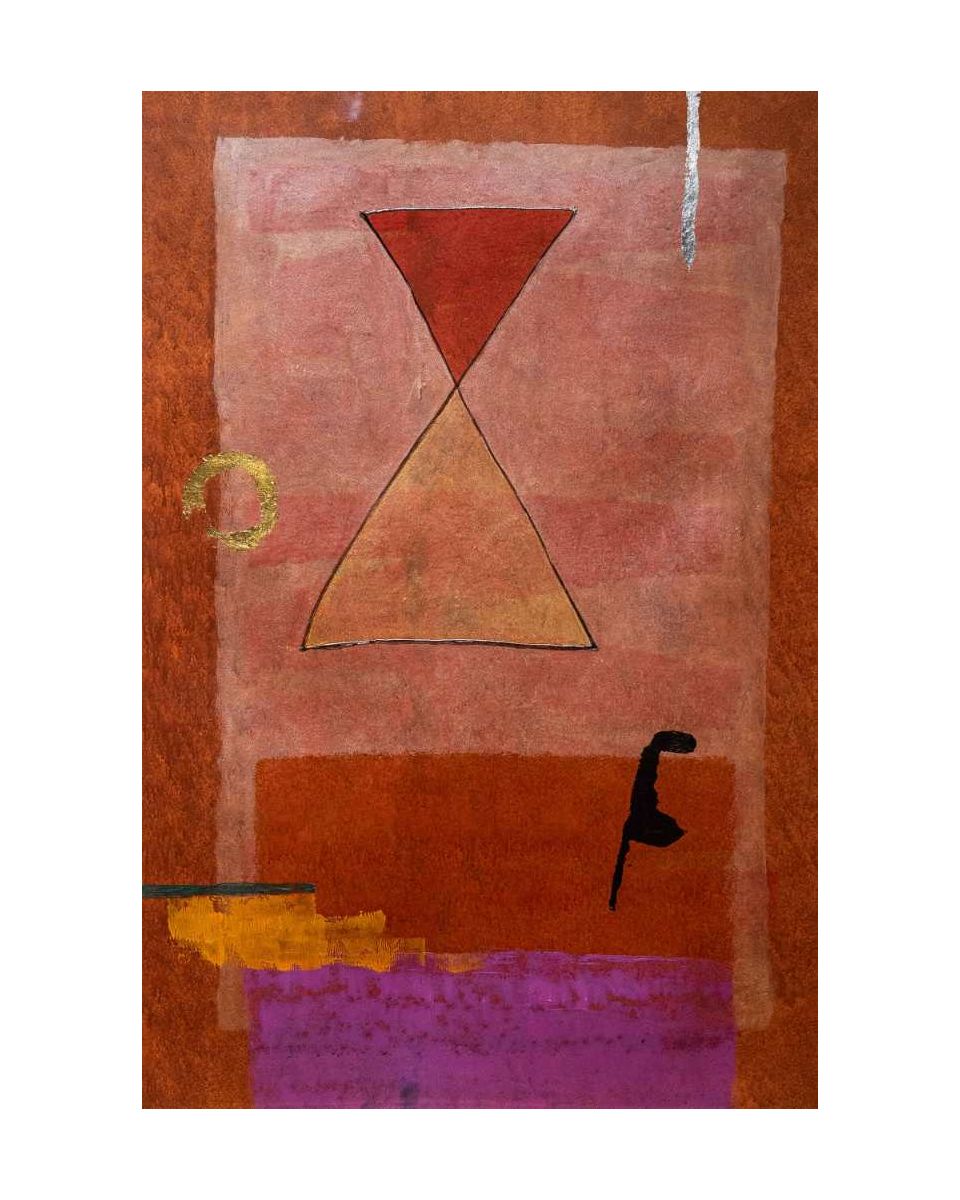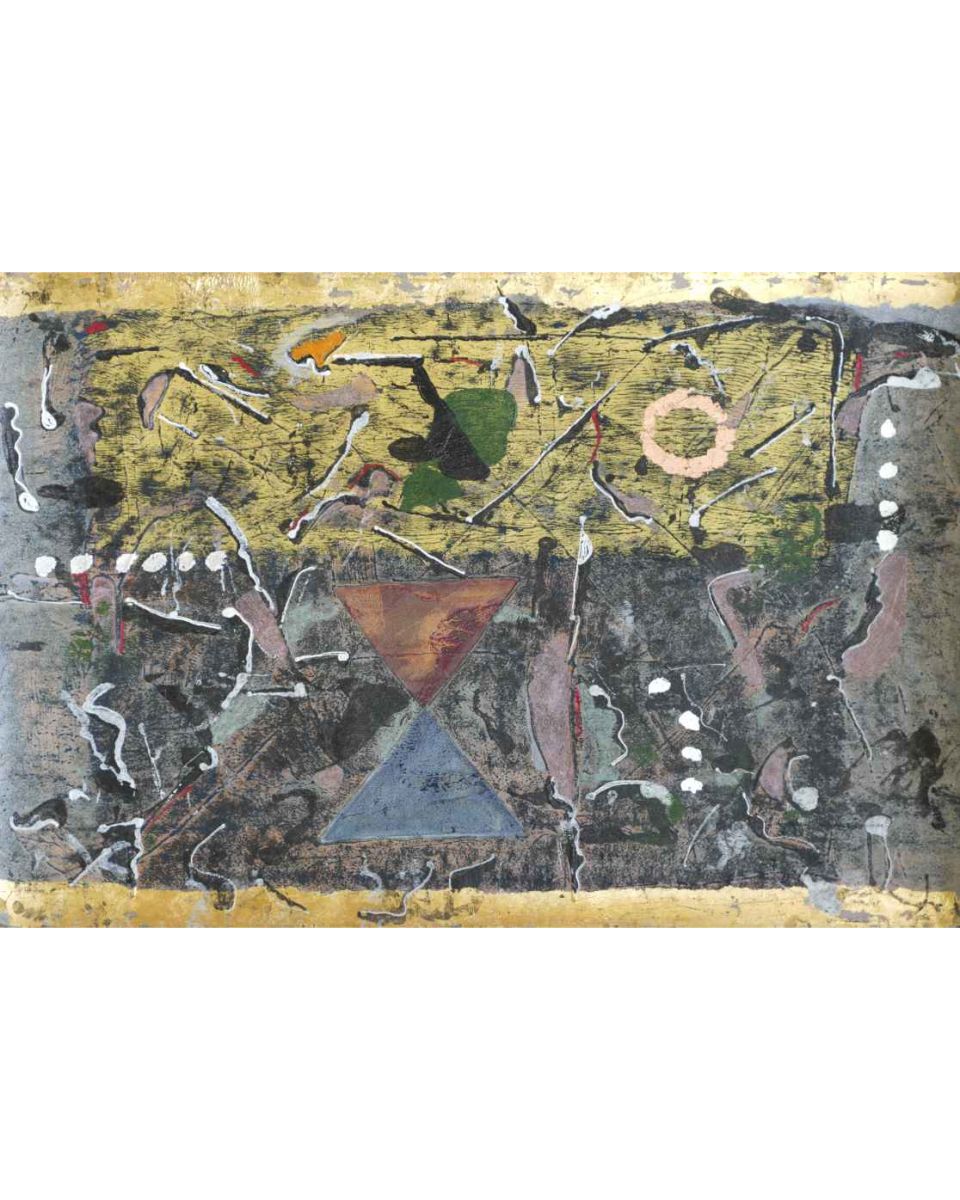SERENE - S. Harshavardhana
Curatorial Advisor: Uma Nair
Dedicated to Thomas Gray
The title of this show penned by S. Harshavardhana is taken from the famous lines of
Thomas Gray, the poet, who wrote, ‘Elegy Written in a Country Churchyard.’ This poem
has bequeathed a number of famous titles and phrases to the world. But Gray’s use of
language in this poem is masterly and filled with the beauty of melancholy.
This exhibition by S. Harshavardhana presents a suite of typical arrangements the artist invented for his studies – of geometry and symbolism in subtle/strong varying layers of colour fields placed in a precise formation. A great lover of India’s tribal traditions he translates tribal symbolism into a modernist mooring of elements that sift and sieve through the tapestry of time. Critically juxtaposed with each other, Harshavardhana’s paintings bring to life the connections between the quiescent triangular forms, which encapsulates the artist’s committed investigation of the ways in which individual artists perceive and experience form and colour.
The canvasses in this exhibition are reminiscent of the visual dynamics and perceptions
of ancient Indian Puranic scrolls. These compositions allow Harshavardhana to examine
colour relationships, and their emotive and psychological impact, in a relatively simple and stable format with the chromatic indices of the pair of triangles becoming the leitmotif. Colour is applied, in a restrained and even manner that minimizes any surface effect. The artist’s treatment of surfaces is pristine, elegant and otherworldly in their refinement.
Sometimes we glimpse biomorphic and geometric shapes, angular and wavy lines, and
lively planes of colour. This exhibition demonstrates how an artist moves in a variety of directions, sometimes in pursuit of paintings pure in colour and open in composition while at other times toward structured, linear designs using familiar geometric shapes. He rejects a loose application of paint— the unprimed canvases are first festooned with flat planes of colour and then built into a distinctive mark making that unravels like memory leaves.
Like the breaking of a line or a page and the gathering of various elements beyond the edge or boundary of a certain area, the works oscillate between ideas of linearity and geometry and overlapping planes of colour. The works on paper in smaller and medium format demonstrate an incredible variety and richness of self-expression that an artist like Harshavardhana finds through abstraction.
Harshavardhana’s highly controlled technique alone belies an emotional content--rational, cool, and detached. We sense an attainment of rational perfection that is the closest approximation of the complexity of nature. The triangle is his element of time; it complements the viewer's response to an already subtle examination of the closely toned hues of the paintings. Although the colours in each panel are sometimes feathery, sometimes solid, through subtle variations in the colour, all paintings seem to transcend their frames and dissolve into a single flow of a solitary sonata. Through the method of
careful colour juxtaposition, Harshavardhana creates compositions that evoke a feeling
of nature, of the sea or sky, or of land slowly enveloped in the mist of morning or a
monsoon cloud.
S Harshavardhana son of the great abstract guru Jagdish Swaminathan explores ideas
around the language of silence: he reminds us of the lost codes of ancient texts and forms
of communication. In the drawing of the lines with his mixed media tools, there is a
signature of cultural resonance. The lines that wander down its vibrant, vertical or
horizontal strokes suggest many things to the modern eye: Indian vernacular alphabets,
scroll art, the rhythms of a silent script that extols the beauty of history and memory.
-Uma Nair


